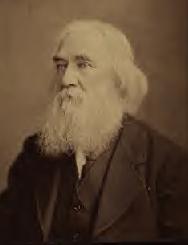Roe v. Wade Day #35
The most important thing feminists have done and have to keep doing is to insist that the basic reason for repealing the laws and making abortions available is justice: women's right to abortion.
...
There are many reasons why a woman might seek a late abortion, and she should be able to find one legally if she wants it. She may suddenly discover that she had German measles in early pregnancy and that her fetus is deformed; she may have had a sudden mental breakdown; or some calamity may have changed the circumstances of her life: whatever her reasons, she belongs to herself and not to the state.
— Lucinda Cisler (1969): Abortion law repeal (sort of): a warning to women
To-day is the 35th anniversary of the United States Supreme Court’s ruling in Roe v. Wade, the jubilee day on which abortion laws were repealed in every state of the United States, and the United States judiciary recognized, finally, even if in a limited and limiting way, every woman’s fundamental human right to control her own body, and to exercise her rightful self-ownership, if she sees fit, to refuse the use of her reproductive organs to Man, Fetus, and State. There's a lot not to like about the specifics of the reasoning in Roe, and it’s often frustrating that Roe is the ruling that we’ve got to celebrate, or at least defend. But if nothing else, it is worth celebrating the pro-choice feminist movement that made Roe inevitable, and which won Roe for the capstone of a remarkable, explosive struggle, over the course of just under 4 years, from the decisive beginning of the pro-choice feminist movement in early 1969, to the Supreme Court decision in January 1973. (There was a small, barely effectual abortion law reform movement before 1969; but February and March 1969 marked the beginning of the abortion law repeal movement, and also the beginning of the pro-choice argument — that is, early 1969 is when the argument shifted from the old tack of getting people to feel sorry for the poor desperate girl, to the new demand by radicalized women for their right to the determine how their own bodies will or will not be used.) The repeal movement exploded basically out of nowhere, at a time when abortion was criminalized in every one of the 50 states. Led by a coalition of radical Women’s Liberationists and radicalized ordinary women, the new movement quickly shoved aside the male experts,
both reactionary and reformist, who had dominated the discourse for decades beforehand, threw out the request for piecemeal reforms
(of the rape-incest-health of the mother variety), demanded instead the complete repeal of all abortion laws, and then won, first with the New York state repeal in 1971, and then with the nation-wide repeal in January 1973. That’s something to remember, and to celebrate.
Men don’t get pregnant, men don’t bear children. Men just make laws.
— Redstockings demonstrator, at a New York legislative hearing on abortion laws, 13 February 1969
Like all anniversaries, this is a good day for remembering, and for honoring. One of the things I think it is most important to remember on this day, in spite of, or perhaps because of, the way in which the occasion is attached to a legal ruling handed down by nine men in black robes, is a matter of strategy. It is all too easy to make the latest political cockfight out as the be-all and end-all of pro-choice activism; to realize, correctly, that the legal position of abortion rights is really precarious and to leap, incorrectly, to the conclusion that if Roe falls, that will be the end of it. No it won’t. The pro-life
State had its guns trained on us before, and we beat it. If it turns its guns on us again, that will be terrible, but we will beat it again nevertheless. Perhaps by once again forcing the hand of state legislators or the courts. Or perhaps not. There are other ways to get it done. Here is how a group of women in Chicago took matters into their own hands, years before Roe, without the blessing of the male experts
and in defiance of the man-made Law, in order to make justice for their sisters a reality.
Radical women in Chicago poured their energy into Jane, an abortion referral service initiated by Heather Booth, who had been a one-woman grapevine for her college classmates. In 1971, after Booth’s departure, some of the women took matters into their own hands and secretly began to perform the abortions themselves. Safe, compassionate terminations for a modest fee became their high calling–a model, as they saw it, for women’s empowerment after the revolution.
Leaflets appeared in the Hyde Park neighborhood of the University of Chicago bearing a simple message:
Pregnant? Don’t want to be? Call Jane at 643-3844.The number rang at the home of one of the activists who volunteered to beJane.As word spread and the volume of calls increased, the service acquired its own phone line and an answering machine, a cumbersome reel-to-reel device that was one of the first on the market. Volunteers, known inside the service ascall-back Janes,visited the abortion seekers to elicit crucial medical details (most important waslmp,the number of weeks since the last menstrual period), then another level of volunteers scheduled an appointment with one of the abortionists on the group’s list.At first the service relied on
Mike in Cicero,who was fast, efficient, and willing to lower his price to five hundred dollars as the volume increased. Mike gradually let down his guard with Jody Parsons, his principal Jane contact, an artisan who sold her beaded jewelry and ceramics at street fairs and was a survivor of Hodgkin’s disease. The clandestine abortionist and the hippy artisan struck up a bond. When Mike confessed that he was not in fact a real doctor but merely a trained technician, she cajoled him into teaching her his skills. Jody’s rapid success in learning to maneuver the dilating clamps, curettes, and forceps demystified the forbidden procedures for another half dozen women in Jane.If he can do it, then we can do itbecame their motto.Madeline Schwenk, a banker’s daughter who had married at twenty,
six months pregnant with no clue whatsoever about how to get an abortion,moved from counseling to vacuum aspiration after Harvey Karman, the controversial director of a California clinic, came to Chicago to demonstrate his technique. Madeline was one of the few women in Jane who was active in NOW, and who stayed affiliated with the Chicago chapter during the year she wielded her cannula and curette for the service.I’d get up in the morning, make breakfast for my three kids, go off to do the abortions, then go home to make dinner,she reminisces.Pretty ourageous behavior when you think about it. But exciting.Jane’s abortion practitioners and their assistants were able to handle a total of thirty cases a day at affordable fees–under one hundred dollars. A doctor and a pharmacist among the women’s contacts kept them supplied with antibiotics.
Fear of police surveillance in radical circles had its match among clandestine abortionists who relied on a complicated rigamarole of blindfolds and middlemen. Jane straddled both worlds. Abortion seekers gathered every Wednesday, Thursday, and Friday at a
frontapartment, usually the home of a Jane member or friend, and were escorted by Jane drivers tothe Place,a rented apartment where the abortions were performed. The fronts and the Place changed on a regular basis. New volunteers, brought into the group by counselors and drivers, went through a probation period before they were told that women in Jane were doing the abortions. The news did not sit well with everyone. Turnover was high, from fear and from burnout, although the service usually maintained its regular complement of thirty members.Jane lost most of its middle-class clientele after the New York law [repealing the state’s abortion ban] went into effect. Increasingly it began to service South Side women, poor and black, who did not have the money to travel out of state, and whose health problems, from high blood pressure to obesity, were daunting. Pressure on the providers intensified. Audaciously they added second-trimester abortionsby induced miscarriage to their skills.
On May 3, 1972, near the conclusion of a busy work day in an eleventh-floor apartment on South Shore Drive overlooking Lake Michigan, Jane got busted. Seven women, including Madeline Schwenk, were arrested and bailed out the following day. The Chicago Daily News blared Women Seized in Cut-Rate Clinic in a front-page banner. The Tribune buried Lib Groups Linked to Abortions on an inside page. Six weeks later the service was back in buinsess. Wisely, the women facing criminal charges selected a defense attorney who was clued in to and optimistic about the national picture. She advised them to hang tight–some interesting developments were taking place in Washington that could help their case. (After the January 1973 Roe decision, all outstanding charges against the seven were dropped.)
The activists of Jane believe they performed more than ten thousand abortions. It’s a ballpark figure based on the number of procedures they remember doing in a given week. For security reasons they did not keep records.
–Susan Brownmiller, In Our Time: Memoir of a Revolution, pp. 123–125
The repeal of the abortion laws in the United States wasn’t a gift handed down out of benevolence by a gang of old men in robes. It was struggled for, and won, by women in our own times. It didn’t take ballot boxes; it didn’t take political parties; it didn’t take clever legal briefs. It took radical women who stood up for themselves, who challenged the authority of self-appointed male experts
and law-makers, who spoke truth to power, who took things into their own hands and helped their sisters, in defiance of the law, because they knew that they had a right to do it, and to hell with any law and any government that said otherwise. Radical feminists who built a movement for their own freedom over a matter of months and decisively changed the world in less than five years. It’s not just that we owe the Redstockings, Cindy Cisler, Heather Booth, Jody Parsons, Madeline Schwenk, and so many others our praise. They do deserve our cheers, but they also deserve our study and our emulation. They did amazing things, and we — feminists, leftists, anti-statists — owe it not only to them, but to ourselves, to honor them by trying to learn from their example.



